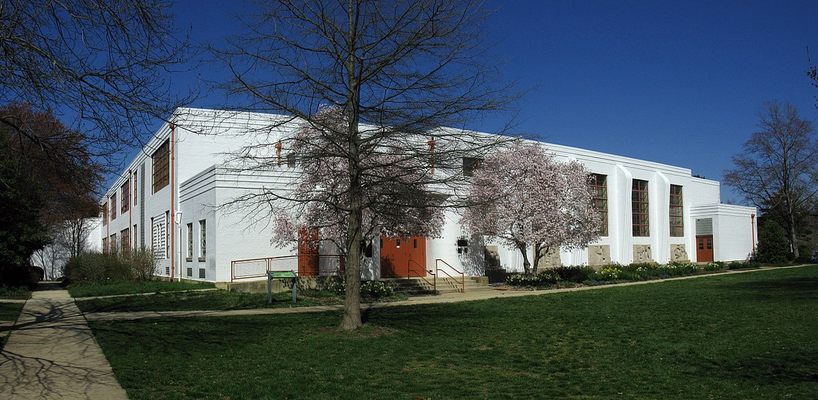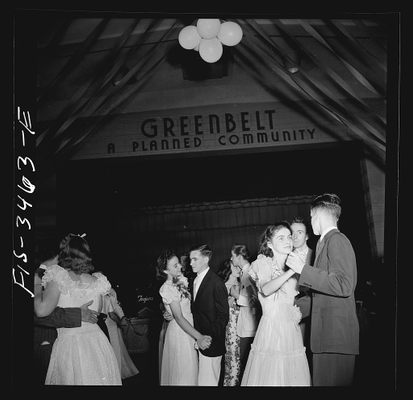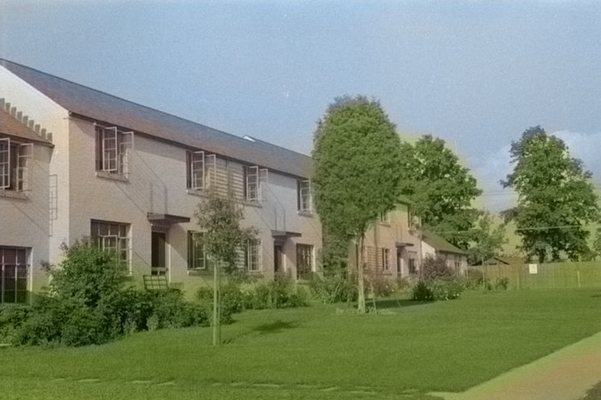About
Greenbelt, Maryland is a suburb of Washington, D.C. and one of three planned communities built by the federal government during the Great Depression. Once hailed as a utopian antidote to the frenzied overcrowding of 1930s-era American cities, Greenbelt’s New Deal look is still mostly intact to a modern visitor.
The Elementary School and public buildings are covered in Art Deco sculptures. And the walkable community still boasts an artificial lake, and the town square is named The Roosevelt Center.
Greenbelt was the first of three “green” series federal towns that also included Greendale, Wisconsin and Greenhills, Ohio. “Year by year our cities grow more complex and less fit for living,” a narrator explained in The City. “The age of rebuilding is here. We must remould [sic] our old cities and build new communities better suited to our needs.”
In that vein, the short-lived Resettlement Administration bought up thousands of acres of undeveloped forest and tobacco fields outside Washington and developed a comprehensive plan that dictated everything from the fundamental shape of the community down to the architectural details of every building. The product was an interesting blended design that falls somewhere in between a turn of the century Garden City, and a post-war suburb.
The Resettlement Administration baked a bit of social engineering into the pie, aiming to promote safe streets and community harmony. Instead of detached single-family residences, the original houses were built in interconnected strips so residents shared a wall and would have more opportunities to interact. The houses also face shared yards rather than the street, and underpasses allowed children to bike around without mingling with automobile traffic.
The federal government’s success at Greenbelt was covered in newspapers across the country, and is featured in a 1939 documentary called The City. But politics quickly put an end to the Resettlement Administration, which was reorganized in 1937 as the Farm Security Administration. Contemporary critics wanted government in the business of saving existing communities, rather than “picking up a farmer here, and moving him over there” in new developments.
Related Tags
Know Before You Go
The above map coordinates mark the Greenbelt Museum, a local resource open on Sunday afternoons.
Community Contributors
Added By
Published
November 22, 2017
Sources
- https://www.newspapers.com/image/304966437/?terms=greenbelt%2BMD%2Bplanned%2Bcommunity
- https://www.newspapers.com/image/83752963/?terms=greenbelt%2BMD%2Bplanned%2Bcommunity
- https://www.newspapers.com/image/57791018/?terms=greenbelt%2BMD%2Bplanned%2Bcommunity
- http://interactive.wttw.com/ten/towns/greenbelt
- http://www.greenbeltmd.gov/DocumentCenter/View/558
- https://www.youtube.com/watch?v=7nuvcpnysjU
- https://archive.org/details/gardencitiestom00howagoog
- https://books.google.com/books?id=kj8EAAAAMBAJ&pg=PA45&dq=greenbelt&hl=en&sa=X&ved=0ahUKEwihuv_f8cvXAhVHKiYKHZIfC8MQ6AEIKDAA#v=onepage&q=greenbelt&f=true

















































